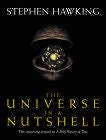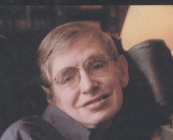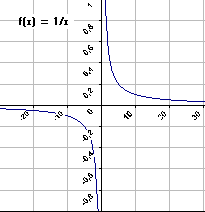Considerations from Dipl.Math. Ulrich Meyer , September 2004 To the main side:
 To German
text:
To German
text:
Continuation of the
Considerations from Dipl.Math. Ulrich Meyer ,
September 2004
To the main side:
![]()
 To German
text:
To German
text:
![]()
Stimulation to this
continuation come from the book '
The Universe in a Nutshell '

of
Stephen
Hawking.

Our modern science found enormous knowledge about
our
universe and his origin from the Big Bang. By Einstein's relativity
theory the
three space dimensions with the time dimension form a unity, the
so-called
space-time and in this there is matter, which is by Einstein (E = m*c²)
equal to energy. The laws of nature describe then the interaction
between the matter particles. This all was concentrated at the time of
the start of the Big Bang at one point, which mathematically is a
singularity (see below - Kap.3 of laws of nature). A highest
concentration of mass and/or energy on a small spatial point, which
expand then by the ‚Big Bang’
to our universe and still
continues to expand. There you must think
about, that the smallest
change with the Big Bang or his initial conditions, we would not very
probably have been occurred in the history or we would have occurred as
something completely different in a very another world. E.g.
if the expansion speed one second after the Big Bang would have been
smaller only around 10-15 %
(Note [ 1 ]), the universe would have
collapsed again. The development after the Big Bang is then very
explainable. Thus we are a result of an inevitable operational sequence
of an evolution. The today's actual conditions of our world were the
most but not completely specified by the Big Bang.
2. Understanding by
simplifying
What was
before the Big Bang and what is
outside and still much what is within our universe, is impossible to
understand for our conventional imagination, which is marked by
our senses on our earth. Only by most modern scientific
measurements and computations there are attempts for a possible partial
explanation. In order to make these realizations more understandable,
we try to reduce them, for instance, for an explanation in the
dimensions. The curved space-time of the universe, which was computed
and proved by Einstein, you can make more understandable by the
following example. You think about a two-dimensional space, so this is
an area,
which should be the surface of a ball. Living beeings on this ball have
only a
two-dimensional thinking and they cannot know something about the
curvature of the ball. If they move however in direction straight for
them,
they return after an orbiting of the ball again to
their starting point, which contradicts however their understanding
totally
(Note [ 2 ])
. With such reductions on an understanding for our conventional
senses we must try to understand the computed and assumed phenomena in
our universe and outside of it.
Stephen Hawking has tried this in his books
„A Brief History of Time“ and „The Universe in a Nutshell“
very descriptive. One possible description of Hawking of our
expanding
universe from a Big Bang is a comparison with cooking water, in which
spontaneously steam bubbles were created and grow up. I find this
comparison attempt very impressive. Our universe would be then only one
of many similar however nevertheless inevitable chance products in
a over universe, a kind origin water from where our energy comes. We
would have come from a kind of energy-crystallizationpoint, which would
have unloaded himself in the form of our universe. This
description may appear for our feeling first roughly seen as nearly
plausible. But with the complexity of our universe for our
understanding, which can hardly understand the curved space with
singularities by our normal senses, such an explanation would already
be too simple. Perhaps but it is a possible reduced explanation, as
described above, and must be extended by dimensions and other
circumstances to come closer to the reality. Already this
picture of bubbles in cooking water is by Hawking more complex than it
first seems to be. Here our universe should not
be the whole bubble but only the surface, a so-called Bran (Note [ 3 ]),
whose inside should be a higher-dimension space. This reminds us to our
above example of the
2-dimensional thinking beings on a ball. With the surface
form there is no center and no border, which corresponds to our
realizations about our expanding universe very well.
With such a picture God could be contained in any form in this
cooking water, in which we would be completely embedded. This
would have also a remarkable symbolic meaning, since for us
life is always connected with the existence of water. On unknown
planets we always look for water, in order to find the possiblility of
life. In reality this cooking water would be a kind plasma or any soup
of particles and energy or something completely different.
But now we have again new questions, how does it look
outside of the Bran? Hawking talk therefore of two further variants
for our universe, which can be deduced mathematically. Once a bubble
like the above model of the cooking water, but
outside of it is absolutely nothing, not yet empty space. Or a bubble,
whose exterior completely connect to the exterior of an equal bubble,
with its inside is turned outward. The Bran would be then the
surface of both bubbles. There would be also nothing outside of
the bubble. This model is already more difficult to understand.
With the last two models only the higher-dimension inside of the
bubble would remain as a place for God. We already feel his 'arms' in
the form of energy, as we assumed in chapter 4
'Where now is
God?'
from the first part of 'Who is
God?'.
Now I
want talk about the laws of nature. You
should differentiate between the laws of nature as the true interaction
in the nature and the laws of nature, which describe scientists with
mathematical formulas. Of the true, real laws of nature there may be
much more than we do now know about.
Mathematics is a science, which on certain bases, e.g. our number
system, has developed a logical building or system in itself.
With the description of the laws of nature by physical
formulas, a mathematical model is compared with nature to get some
predictions. If then these calculation agree with the reality,
we accept this model as a law of nature. Perhaps any other beings in
our universe may be haved developed a completely different number
system, which is also logical in itself. Their mathematically laws
of nature may be look other, but they have the same results.
There is a problem in the correspondence of nature with
mathematical
formulas particularly by singularities.
 A singularity is for example when x come to zero in
the function f(x) = 1/x. The
value f(x) gets then infinitely
and is there not defined. However In
our universe singularities always occur, e.g. the
matter density by the start of the Big Bang or by black holes.
Then there are difficulties with the mathematical description of
these states. But these singularities are very interesting,
because they are possibly slip holes or a kind of valves from our
universe to outside.
A singularity is for example when x come to zero in
the function f(x) = 1/x. The
value f(x) gets then infinitely
and is there not defined. However In
our universe singularities always occur, e.g. the
matter density by the start of the Big Bang or by black holes.
Then there are difficulties with the mathematical description of
these states. But these singularities are very interesting,
because they are possibly slip holes or a kind of valves from our
universe to outside.
After Einstein had formulated his theory of relativity, this
seemed first in contradiction to the classical mechanics. But
relativity theory
change to Newton's laws by condition of speeds, which are
very small in relation to the speed of
light or with very small gravitation forces. Also the theory of
relativity could not be used for the description of atomic procedures.
These get only possible by quantum mechanics. In addition, the
classical mechanics is a special case of quantum mechanics. An
incompleteness of the mathematical formulation is also in the
description of the light. We describe it in a binary model once as
a corpuscle and once as a wave depending of the regarded process. The
interference
of light can be described only as overlay of light waves and not by the
corpuscle model. On the other hand the energy of the light is sent out
in quants, the so-called photons, and not in
a continuous stream. This is explainable only by a particle model.
By the description of light phenomena you must always
decide, which model you can use for the explanation.
The mathematical theories are actually only models, which are
projected onto nature, in order to describe the process from events and
to
precalculate these. Stephen Hawking and other scientists are still
until today on the search for a uniform theory, which can describe the
universe altogether. All well-known theories of classical physics,
theory of relativity, quantum theory, string theory till to the newest
Bran worlds models should be contained in this uniform theory then as
special cases. With such a theory many questions of today from the
universe would be explained and we come closer to the wisdom of the
Doomsday.
4. Searching for a simplified
God picture
The science will still need some
time to come to an uniform
theory. Then we would be much more closer to an answer to our question 'Who
is God?'. Hence, we should go forward with all the speculations
about God just like we do it with our attempts for explanations about
our universe. Therefore we shall think of his 'being' as something far
away from our understanding. He can only exist in a form, which is far
outside of our comprehension. We shall look first therefore for a
simplified God picture. Our descriptions could be only a reduced form,
similarly as we do it by
the scientific descriptions of the universe. So also the above
description attempts should be regarded. The look at God as
an old man in the heaven, may be also a reduced description. However
this
fits to times of an much earlier understanding. With the today's
scientific level of knowledge you must proceed nevertheless from a much
more complicated existence. The problem here is still however,
that this existence would have to be in a space, which is also not yet
completely cleared for us at the present.
I have asked myself much times also in responsibility to my children, if I am a atheist. Many religious people would thing so according to my above statements. My answer however is a clear No. I accept and support the Christian doctrine and that of other religions as a necessity for positive, peaceful and future-oriented living and living together of the humans. But I do not accept the old-fashioned representation and the views of the today's church. Also today more and more people have this opinion, which you can see by the many church leavings. For the explanation of my opinion I can refer to my homepage.
6. Here you come to the
continuation - the Part 3
of 'Who is god?' with the answer!
7.
Notes:
[ 1 ]: This is
0.0000000000000001 % and percent means again 1/100.
[back]
[ 2 ]: Exactly we have the
same
in our universe. If we could fly away with a rocket in
a straight direction, we would return some day after a long long time
to our starting point. Such a flight is however impossible because of
our short
lifetime and the absence of an appropriate rocket.
[back]
[ 3 ]: A p-Bran is an
object
which expands in p-space directions. Especially a membran is a
2-dimensional and a
string a 1-dimensional Bran. [back]
--------------------------------------------------------------------------------------------------------------------------------------------------------------------
Last change: December 2013
![]()
--------------------------------------------------------------------------------------------------------------------------------------------------------------------